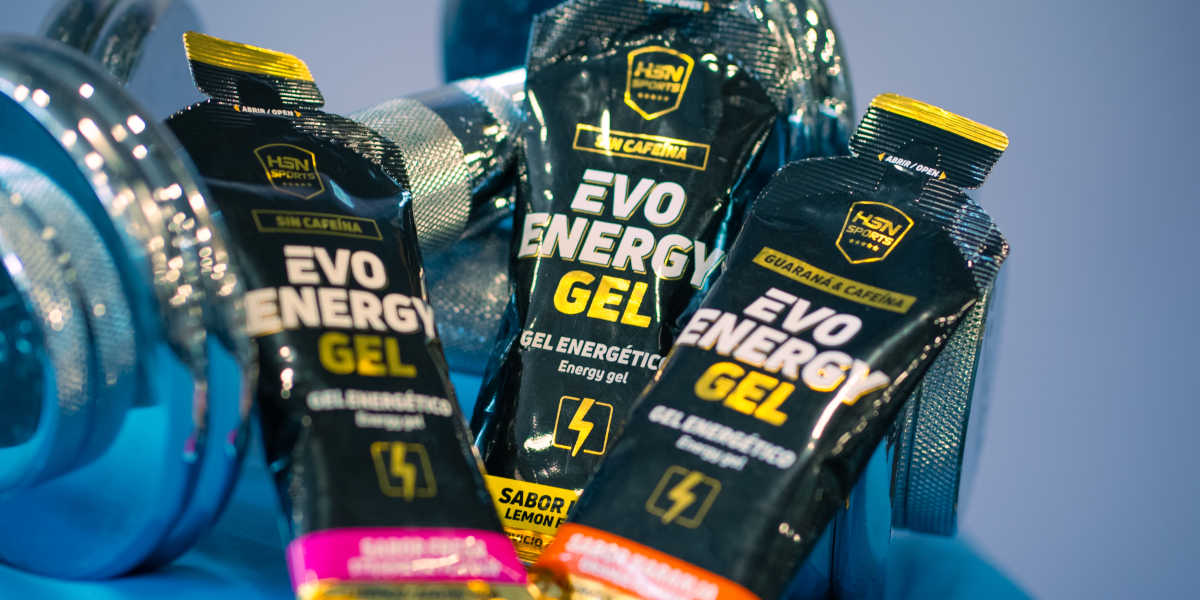Home>Misc>Featured>What Form Of Metabolism Is Used For Distance Running


Featured
What Form Of Metabolism Is Used For Distance Running
Modified: January 2, 2024
Discover the featured form of metabolism used for distance running and how it helps athletes optimize their performance. Uncover the secrets of endurance training and fuel your running journey.
Introduction
Distance running is a demanding sport that requires endurance, strength, and efficient energy utilization. Whether you’re a seasoned marathon runner or just starting out on your running journey, understanding the role of metabolism in distance running is crucial for optimizing performance.
Metabolism refers to the chemical processes that occur within living organisms to maintain life. In the context of distance running, metabolism is responsible for converting stored energy into fuel to sustain muscle activity. It involves a series of complex metabolic pathways that determine the type and source of energy utilized during exercise.
In this article, we’ll explore the different forms of metabolism involved in distance running and their importance for performance. We’ll delve into the aerobic metabolism, glycolysis, and fatty acid oxidation, highlighting their roles and how they contribute to endurance. Additionally, we’ll discuss the various factors that influence metabolism in distance running, and provide some training strategies to optimize energy utilization.
Whether you’re aiming to complete your first 5K or shave minutes off your marathon time, understanding the underlying metabolic processes in distance running can help you train smarter and achieve your goals. So let’s dive in and unravel the fascinating world of metabolism in distance running.
Definition of Distance Running
Distance running is a form of aerobic exercise that involves covering long distances on foot. It is typically classified as any running activity that exceeds a distance of 5 kilometers (3.1 miles). However, the actual distance can vary depending on the specific race or individual training goals. Distance running events range from 5K races to challenging ultramarathons, which can cover distances of 50 kilometers or more.
Unlike sprinting or short-distance running, which rely heavily on anaerobic metabolism and explosive power, distance running primarily utilizes aerobic metabolism to sustain prolonged exercise. Instead of relying on quick bursts of energy, distance runners must maintain a steady pace over an extended period. This requires the efficient utilization of fuel sources to provide the necessary energy for muscle contractions and movement.
Distance running can have various purposes, including recreational running for fitness and pleasure, competitive racing, or as part of training for longer endurance events like marathons or ultra-marathons. It offers a multitude of physical and mental benefits, such as improved cardiovascular health, increased endurance, weight management, stress relief, and the opportunity to connect with nature and like-minded individuals through running communities and races.
It’s important to note that distance running is a highly individualized activity. Each runner has their own goals, abilities, and limitations. Some may focus on improving speed and setting personal records, while others may prioritize completing the distance and enjoying the journey. Regardless of your specific objectives, understanding the metabolic processes involved in distance running can help you make informed training choices and optimize your performance.
Overview of Metabolism in Running
Metabolism plays a crucial role in providing the energy needed for running. When you lace up your running shoes and hit the pavement, your body relies on various metabolic pathways to convert fuel sources into usable energy. Understanding the basics of metabolism in running can help you fuel your body effectively and optimize your performance.
The primary source of energy during running comes from adenosine triphosphate (ATP), a molecule that stores and releases energy for cellular processes. ATP can be generated through different metabolic pathways, depending on the intensity and duration of the running activity.
Aerobic metabolism is the dominant pathway used during low to moderate-intensity running. This process involves the breakdown of carbohydrates and fats in the presence of oxygen to produce ATP. Carbohydrates, stored as glycogen in our muscles and liver, serve as the initial fuel source. As the duration of the run extends, the body gradually shifts to using a higher percentage of fat as fuel.
As the intensity of running increases, the body relies more on anaerobic metabolism and a process called glycolysis. Glycolysis involves the breakdown of glucose from carbohydrates to produce ATP without the presence of oxygen. This metabolic pathway provides a quick burst of energy but is not sustainable for longer durations. It can lead to the accumulation of lactic acid in the muscles, causing fatigue and reduced performance.
Another important metabolic process in distance running is fatty acid oxidation. This occurs when the body utilizes stored fat as a fuel source during prolonged endurance activities. Fatty acids are broken down to generate ATP, providing a steady and long-lasting source of energy. Training the body to efficiently use fat as fuel can enhance endurance and delay the onset of fatigue.
It’s important to note that the body’s ability to switch between different metabolic pathways depends on factors such as exercise intensity, training adaptations, fitness level, and nutrition. Your body is continuously adjusting its metabolic responses to meet the energy demands of running.
Understanding these metabolic processes can help inform your training and nutrition strategies to optimize performance. By fueling your body with the right mix of carbohydrates and fats, and by training across different intensity levels, you can enhance your energy utilization and unlock your full running potential.
Aerobic Metabolism in Distance Running
Aerobic metabolism is a fundamental process that powers distance running. It relies on the presence of oxygen to convert carbohydrates and fats into ATP, the energy currency of our cells. This metabolic pathway is essential for prolonged endurance activities, as it provides a steady and sustainable source of energy.
During aerobic metabolism, the body initially taps into its glycogen stores for fuel. Glycogen is the stored form of glucose and is primarily stored in the muscles and liver. As you start your distance run, your body utilizes glycogen to meet the energy demands. This energy source is readily available and is quickly converted into ATP to fuel muscle contractions.
As the duration of the run progresses, the body gradually shifts towards using fats as the primary fuel source. Fat provides a more efficient and abundant energy source compared to carbohydrates. However, fat metabolism requires more oxygen to be fully utilized, which is why it becomes more prominent during endurance activities where the oxygen supply is sufficient.
To optimize aerobic metabolism, it’s important to train at different intensity levels. Long, slow distance runs help enhance the body’s capacity to use fats as fuel by stimulating the growth of energy-producing mitochondria in muscle cells. These mitochondria are responsible for the breakdown of fats and the production of ATP. By regularly incorporating aerobic base training into your running routine, you can improve your body’s ability to utilize fats, resulting in increased endurance and improved performance.
Nutrition also plays a crucial role in supporting aerobic metabolism during distance running. Consuming a well-balanced diet that includes both carbohydrates and healthy fats provides the necessary fuel for your body. Carbohydrates should come from complex sources like whole grains, fruits, and vegetables, while healthy fats can be obtained from foods such as avocados, nuts, and seeds. This combination ensures a steady supply of energy and supports the efficient metabolism of both carbohydrates and fats during your runs.
Proper hydration is another essential factor for optimizing aerobic metabolism. Dehydration can impair your body’s ability to transport oxygen, limiting the efficiency of aerobic metabolism. Make sure to drink enough water before, during, and after your runs to maintain proper hydration levels.
Ultimately, aerobic metabolism is the key to endurance in distance running. By training your body to efficiently use both carbohydrates and fats as fuel sources, you can enhance your stamina, delay the onset of fatigue, and improve your overall performance in long-distance events.
Role of Glycolysis in Distance Running
Glycolysis plays a significant role in distance running, especially during high-intensity efforts or when the body needs to generate energy quickly. It is a metabolic process that converts glucose, obtained from carbohydrates, into ATP without the presence of oxygen. While aerobic metabolism is the primary energy source in distance running, glycolysis comes into play when immediate bursts of energy are required.
During distance running, as the intensity increases, the demand for energy surpasses the supply of oxygen available to the muscles. This leads to an increase in anaerobic metabolism, specifically glycolysis. Glycolysis provides a rapid source of ATP production by breaking down glucose into pyruvate and converting it into lactate.
Although lactate is often perceived as a waste product that causes muscle fatigue, it actually serves as a valuable fuel source in itself. The lactate produced during glycolysis can be shuttled to other cells or muscle fibers where it is converted back into pyruvate and used for energy production through aerobic metabolism. This process is known as the lactate shuttle, and it allows the body to utilize lactate as an alternative source of fuel during prolonged, high-intensity efforts.
Training the body’s glycolytic system is crucial for distance runners, as it helps improve the ability to sustain higher intensities and withstand fatigue. Incorporating interval workouts, tempo runs, and hill sprints into your training routine can enhance glycolytic capacity and increase the body’s anaerobic threshold. By pushing your body to work at higher intensities, you stimulate adaptations that improve the efficiency and capacity of glycolysis.
It’s important to mention that glycolysis has its limitations. As the duration of activity exceeds a few minutes, the accumulation of lactate can lead to increased acidity in the muscles, causing discomfort and reduced performance. Therefore, distance runners should aim to strike a balance between training the aerobic system and the glycolytic system. By developing both energy systems, you can optimize your body’s ability to sustain higher intensities while maintaining the ability to efficiently utilize fats and oxygen for prolonged endurance.
Additionally, proper nutrition plays a vital role in supporting glycolysis during distance running. Consuming carbohydrates before and during longer runs supplies the necessary glucose for glycolysis, helping to delay the onset of fatigue and preserve glycogen stores. A well-rounded diet that includes adequate carbohydrates, proteins, and fats can provide the fuel and nutrients needed to support glycolysis and overall running performance.
In summary, glycolysis is an important metabolic process in distance running, providing quick bursts of energy when oxygen supply is limited. By incorporating specific training exercises and maintaining proper nutrition, you can enhance your body’s glycolytic capacity and improve your ability to sustain higher intensities during your runs.
Importance of Fatty Acid Oxidation in Distance Running
Fatty acid oxidation is a key metabolic process that plays a crucial role in distance running. It involves the breakdown of fatty acids to generate ATP, providing a sustained and long-lasting source of energy that is essential for endurance activities.
During distance running, as the duration extends beyond a certain threshold, the body gradually relies more on fats as a fuel source. Fatty acids are stored in adipose tissue and skeletal muscle triglycerides, and they serve as a dense source of energy. Compared to carbohydrates, fats provide a greater amount of ATP per unit of oxygen consumed, making them an efficient energy source for endurance activities.
The ability to efficiently oxidize fatty acids is crucial for distance runners, as it helps to spare glycogen stores and prevents the onset of fatigue. By relying on fats as a primary fuel source, runners can preserve their limited glycogen stores and delay the depletion of this essential carbohydrate source. This is particularly important during long-distance events like marathons or ultramarathons, where sustained energy availability is crucial.
Training the body to optimize fatty acid oxidation is a key focus for distance runners. Endurance training at lower intensities, such as long, slow distance runs, helps improve the body’s ability to utilize fats efficiently. This type of training stimulates metabolic adaptations, including an increase in the number and efficiency of mitochondria, the cellular powerhouses responsible for fatty acid oxidation. These adaptations enhance the body’s ability to rely on fats for fuel and spare glycogen during prolonged exercise.
In addition to training adaptations, proper nutrition also plays a significant role in supporting fatty acid oxidation during distance running. Consuming a well-balanced diet with an adequate intake of healthy fats, such as avocados, nuts, and olive oil, can help support the availability and utilization of fatty acids as a fuel source. It’s essential to maintain a balanced macronutrient profile that includes carbohydrates for immediate energy needs and fats for sustained energy production.
Another aspect to consider is pre-race nutrition. By properly fueling with a combination of carbohydrates and fats prior to a long-distance event, runners can optimize their fatty acid oxidation and have a readily available energy source to sustain them throughout the race.
Overall, the importance of fatty acid oxidation in distance running cannot be overstated. By training your body to efficiently use fats as a fuel source and incorporating proper nutrition strategies, you can enhance your endurance, preserve glycogen stores, and improve performance in long-distance running events.
Factors Affecting Metabolism in Distance Running
Metabolism in distance running is influenced by various factors that can impact energy utilization, efficiency, and overall performance. Understanding these factors is key to optimizing your body’s metabolic processes during your runs. Let’s explore some of the key factors that affect metabolism in distance running:
1. Fitness Level: Fitness level plays a significant role in metabolism. Well-trained athletes tend to have higher aerobic capacities, meaning their bodies can efficiently utilize oxygen and produce ATP at a higher rate. This allows them to sustain higher intensities for longer periods while relying more on fats as a fuel source.
2. Training Adaptations: Regular training stimulates adaptations in the body that optimize metabolism. Endurance training at different intensity levels helps improve the efficiency of aerobic metabolism and fatty acid oxidation. These adaptations include increased mitochondrial density, improved enzyme activity, and enhanced oxygen delivery to muscles.
3. Body Composition: Body composition, particularly the percentage of lean muscle mass, can influence metabolic rate. More lean muscle mass generally leads to a higher basal metabolic rate, meaning more calories are burned at rest. Having a higher muscle-to-fat ratio can also enhance energy utilization during running.
4. Nutritional Factors: Nutrition plays a crucial role in metabolism for distance running. The intake of carbohydrates, fats, and proteins affects the body’s fuel availability and energy production. Consuming an appropriate balance of macronutrients and staying properly hydrated supports optimal metabolism during runs.
5. Hydration: Hydration status can impact metabolism during distance running. Dehydration can reduce blood volume and hinder oxygen delivery to muscles, leading to decreased aerobic metabolism and reduced performance. It’s essential to stay hydrated before, during, and after runs to support optimal energy production.
6. Environmental Conditions: Environmental factors such as temperature and altitude can influence metabolism. Higher temperatures can increase sweating and lead to fluid and electrolyte imbalances, affecting energy utilization. Similarly, running at high altitudes can impact oxygen availability, potentially altering the body’s metabolic responses.
7. Sleep and Recovery: Adequate sleep and proper recovery play important roles in metabolism. Lack of sleep can disrupt hormonal balance and metabolic processes, negatively impacting performance. Prioritizing quality sleep and allowing sufficient time for recovery is essential for maintaining optimal metabolism in distance running.
Remember, everyone’s metabolism is unique, and different factors may have varying effects on individuals. It’s important to listen to your body, experiment with different training and nutrition strategies, and seek guidance from professionals to optimize your metabolism for distance running.
Training Strategies for Optimizing Metabolism in Distance Running
Optimizing metabolism is crucial for distance runners to improve energy utilization, enhance endurance, and maximize performance. By employing specific training strategies, you can train your body to efficiently burn fuel and optimize metabolic processes. Here are some effective training strategies for optimizing metabolism in distance running:
1. Incorporate Interval Training: Interval training involves alternating between periods of high-intensity running and active recovery. This type of training stimulates both aerobic and anaerobic pathways, improving both energy utilization and overall fitness. Intervals help develop your anaerobic capacity, enhance glycolysis, and increase your body’s ability to handle lactate. Incorporating interval sessions once or twice a week can significantly improve your metabolic efficiency.
2. Include Tempo Runs: Tempo runs are sustained efforts at a challenging but manageable pace, typically at or slightly below your lactate threshold. These runs help improve both aerobic and anaerobic metabolism, as they push your body to maintain a fast pace for an extended period. Tempo runs improve your body’s ability to clear lactate, enhance mitochondria density, and increase your lactate threshold.
3. Long Slow Distance Runs: Long slow distance (LSD) runs are an essential component of endurance training. These runs are performed at a comfortable pace over a longer duration, typically longer than your race distance. LSD runs help develop cardiovascular endurance and improve fat metabolism. They stimulate adaptations in the body, such as increased mitochondrial density, that optimize your ability to utilize fats as a fuel source during longer runs.
4. Strength Training: Incorporating strength training exercises into your training regimen can have a significant impact on your metabolism. Strength training helps build lean muscle mass, which increases your basal metabolic rate and improves overall energy expenditure. It also helps develop muscular strength and power, contributing to better running efficiency, especially during uphill or sprinting efforts.
5. Implement Rest and Recovery: Adequate rest and recovery are essential for optimizing metabolism. Overtraining and lack of recovery can negatively impact metabolic processes, leading to decreased performance and increased risk of injury. Make sure to incorporate rest days into your training schedule, prioritize quality sleep, and include active recovery activities such as stretching, foam rolling, or gentle cross-training.
6. Fuel Properly: Nutrition plays a key role in optimizing metabolism for distance running. Consuming a balanced diet that includes carbohydrates, fats, and proteins supports energy production and efficient fuel utilization. Adequate hydration is also essential for optimal metabolism. Before long runs or races, properly fuel with a combination of carbohydrates and fats to ensure a readily available energy source and sustained endurance.
7. Monitor and Adjust: Keep track of your training progress, performance, and how your body feels. Regularly monitoring your training metrics, such as pace, heart rate, and perceived effort, can help you assess your metabolic response and make necessary adjustments to your training plan. Adapt your training based on your unique needs, considering factors like fitness level, goals, and current performance.
Incorporating these strategies into your distance running training can help optimize your metabolism, improve your energy utilization, and enhance your performance. By training smart and fueling your body properly, you can maximize your metabolic efficiency and unlock your full running potential.
Conclusion
Understanding the intricacies of metabolism in distance running is vital for optimizing performance and maintaining endurance. Whether you’re a seasoned marathon runner or just getting started on your running journey, incorporating strategies to optimize metabolism can significantly impact your running experience.
We explored the different forms of metabolism involved in distance running, including aerobic metabolism, glycolysis, and fatty acid oxidation. These metabolic processes work synergistically to supply the energy needed for muscle activity during runs, depending on the intensity and duration of the activity.
Aerobic metabolism, fueled by carbohydrates and fats, is the primary energy source for distance running. By training your body to efficiently use fats as fuel during long, slow distance runs, you can enhance endurance and preserve glycogen stores. Glycolysis, on the other hand, provides quick bursts of energy when oxygen supply is limited, making it important for high-intensity efforts. By integrating interval training and tempo runs, you can train your body to improve glycolytic capacity and sustain higher intensities.
The importance of fatty acid oxidation in distance running cannot be understated. By optimizing the body’s ability to utilize fats as a fuel source through training and nutrition, runners can enhance endurance and delay fatigue. Consuming a balanced diet that includes carbohydrates, fats, and proteins, as well as staying hydrated, supports optimal metabolic processes during runs.
Several factors influence metabolism in distance running, including fitness level, training adaptations, body composition, nutrition, hydration, environmental conditions, and sleep and recovery. By considering these factors and making appropriate adjustments, you can optimize your body’s metabolic responses and enhance performance.
Lastly, incorporating specific training strategies such as interval training, tempo runs, strength training, and long, slow distance runs can significantly improve metabolic efficiency and overall running performance. Monitoring your training progress, fueling properly, and prioritizing rest and recovery are key components of a successful training plan.
In conclusion, understanding metabolism in distance running is fundamental for optimizing energy utilization and performance. By implementing appropriate training strategies, fueling your body properly, and listening to your body’s needs, you can enhance your metabolic efficiency and unlock your full potential as a distance runner.









